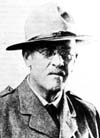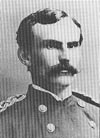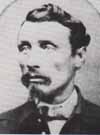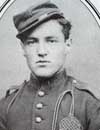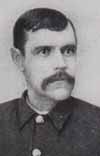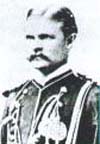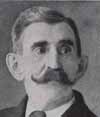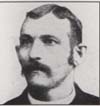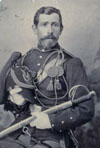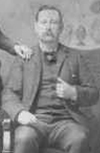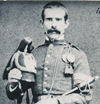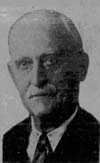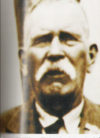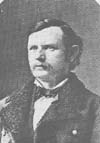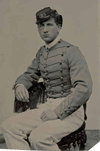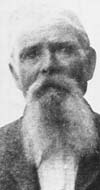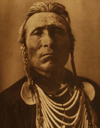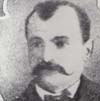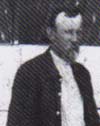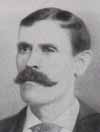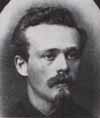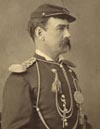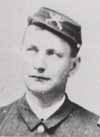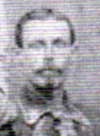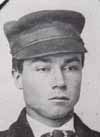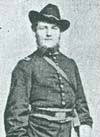Happy Valentine’s Day
Edward Housen was born on February 14, 1848, in Frankfurt, Germany. He was a Private in Company D who was killed on June 26, 1876, during the hilltop fight at the Battle of the Little Bighorn.
John Valentine Whisten was born on February 14, 1852, in New York, New York. He was a Private in Company M who fought in the valley and hilltop fights.
Elijah T. Strode died on February 14, 1881, in Miller’s Saloon in Sturgis City, Dakota Territory. He was fatally shot by Private Thomas J. Whalen and buried in the Fort Meade National Cemetery. He was a Private in Company A who was wounded while participating in the valley and hilltop fights.
On February 14, 1882, Edwin Philip Eckerson married Sophie M. Bergsland in Hays, Kansas. He was a Second Lieutenant in Company L, but he was not present at the battle because he was enroute.
Charles Kavanaugh died in Washington, D.C., on February 14, 1886, and was buried in the Soldiers’ Home National Cemetery there. He was a Private in Company M who participated in the valley and hilltop fights.
Charles Henry Bischoff died on February 14, 1924, in Baltimore, Maryland, and was buried there in the Loudon Park Cemetery. He was a Private in Company C who was not present at the battle due to detached service at Powder River, Montana.
Julius Griesner died on February 15, 1882, and was buried in Fort McPherson National Cemetery in Maxwell, Nebraska. He was a Private in the Band, which remained at Powder River.
John Muering died in Fort Wayne, Michigan, on February 15, 1902, and was buried in the Woodmere Cemetery in Detroit. He was the Saddler for Company A who was not present at the battle due to detached service with General Terry.
Theodore Goldin (left) died on February 15, 1935, in King, Wisconsin, and was buried in the Wisconsin Veterans Memorial Cemetery there. He was a Private in Company G who participated in the valley and hilltop fights and was awarded the Medal of Honor for his actions under fire.
Frank J. Geist was born on February 16, 1856, in Wurtzburg, Bavaria. He was a Private in Company G who was not present at the battle due to detached service at Powder River, Montana, with the regimental band.
George Edwin Lord (left) was born on February 17, 1846, in Boston, Massachusetts. He was the Assistant Surgeon for the Seventh who was killed with Custer’s Column.
John A. Bailey divorced his first wife on February 17, 1869, and he did not remarry until 1894. He was a Saddler with Company B who rode with the pack train and participated in the hilltop fight.
John J. Rafter married Mary Madden on February 17, 1877. She was the widow of his friend, Private Robert H. Hughes (right) who was killed in the Deep Ravine. Rafter was a Sergeant in Company K who was with the pack train and participated in the hilltop fight.
Thomas Eaton Graham died on February 17, 1907, in Columbus, Ohio, and was buried in the Dayton National Cemetery. He was a Private in Company G who participated in the valley and hilltop fights.
David W. Lewis was born on February 18, 1852, in St. Louis, Missouri. He was a Private in Company B who was not present at the battle because he was confined as a result of a general court martial.
William Othniel Taylor (left) was born in Canandaigua, Ontario County, New York, on February 18, 1855. He was a Private in Company A who participated in the valley and hilltop fights. He died the day after his 68th birthday (see below).
William Gibbs died on February 18, 1934, in Napa, California, and was buried in the Veterans Memorial Grove Cemetery in Yountville, California. He was a Private in Company K who participated in the hilltop fight.
Alexander Brown (left) was born on February 19, 1844, in Aberdeen, Scotland. He was a Sergeant in Company G and was with the pack train and in the hilltop fight.
William Othniel Taylor died in Orange, Massachusetts, on February 19, 1923, and was buried in the Central Cemetery there.
Ernest Garlington (right) was born on February 20, 1853, in Newberry, South Carolina. He was a Second Lieutenant assigned to the Seventh Cavalry, but he was not present because he was on leave after graduation from the United States Military Academy at West Point.

